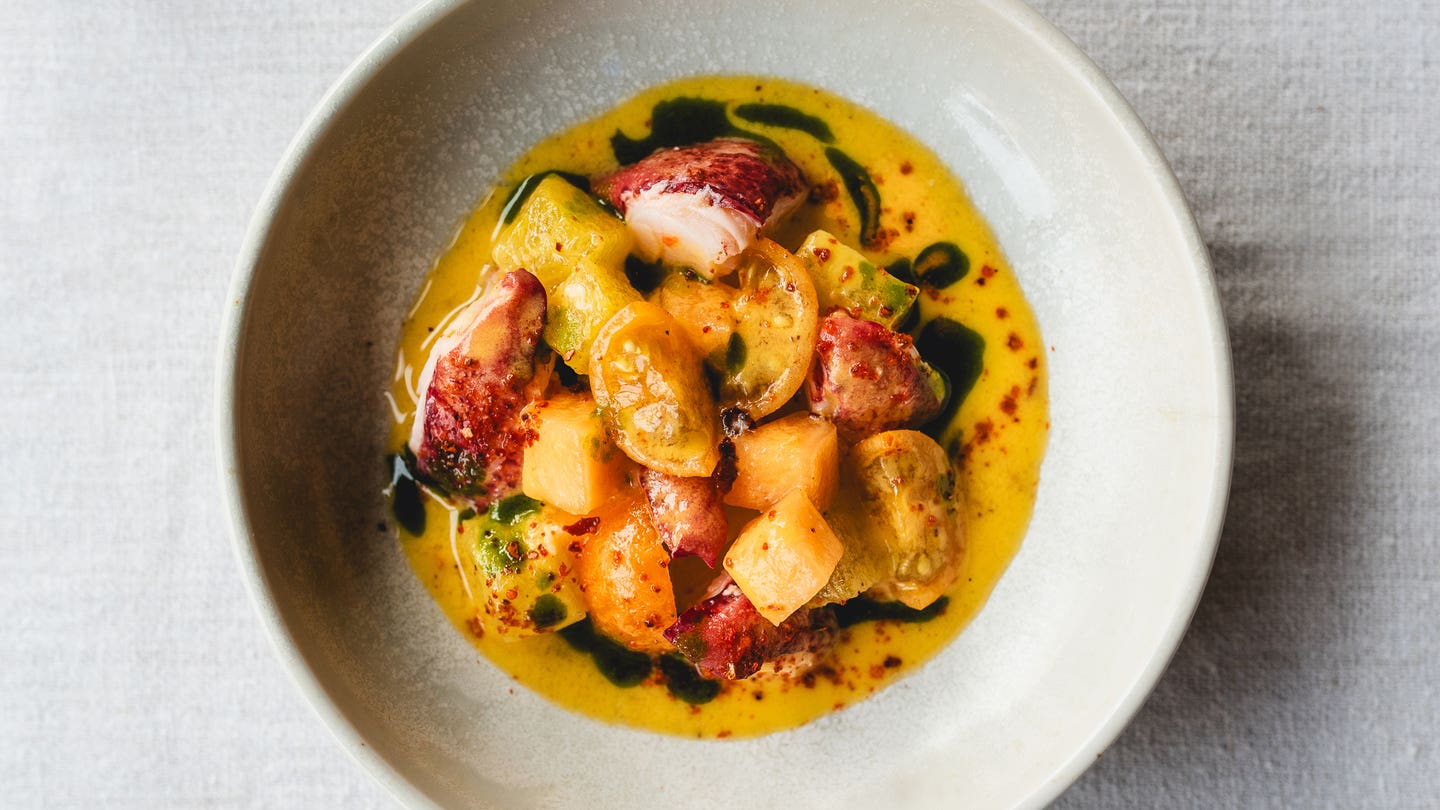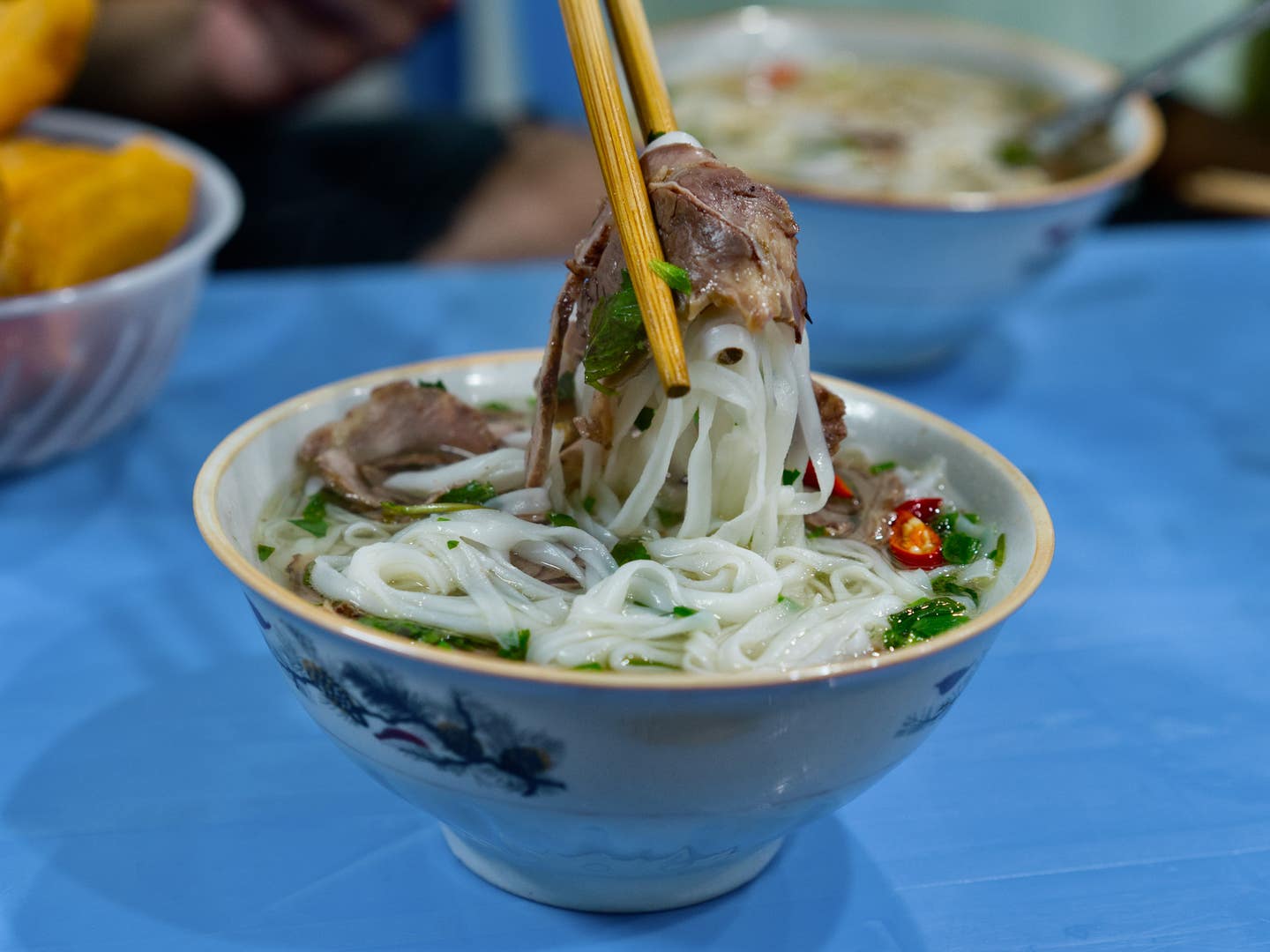
Is This the Best Pho in Hanoi?
Or does a back-alley journey just make one excellent bowl even more tempting?
The search for the best pho in Hanoi leads me to a nondescript alleyway, as does the search for the best of most things in this ancient, labyrinthine city, where poking one's head behind a storefront and detouring up rickety stairs more often than not yields the reward of discovery. It's a sweltering, windless June day in the Old Quarter, whose colonial French structures stand beside crumbling, millennia-old temples and landmarks. A stark contrast to commerce-driven Saigon, where much of history has been torn down and replaced. Here in Hanoi, the streets are named after the wares hawked in the old days, things like silver and jewelry, candies and dried fruits, and bamboo goods.
Our guide today is Hanoi native and Vietnam excursion guru Tran Thuy Hai, but today, she's taking a break from swinging through Vietnam's caves (including the world's largest, Son Doong) to go on a different sort of adventure: locating the sidewalk corner pho joint she'd frequented in years past. She's promised us unforgettable pho, an endorsement that perks up my ears since I've long committed myself to the endless task of seeking out the "world's best pho." (I should detour here to say that the "world's best pho" isn't a single dish in a specific place, but rather an abstract ideal, a noodle-soup nirvana, its broth found simmering, under the vigilant surveillance of Vietnamese parents and grandparents, in the well-worn pots of Vietnamese kitchen all over the world.)
But if, as goes the age-old Vietnamese adage, rice is a man's wife while pho is his mistress, wouldn't a little pursuit make that first slurp of broth all the more alluring? I won't tell you I've resolved my quest to find the best pho in all the land, but what I have found is a damn good street bowl that's hidden in plain sight.
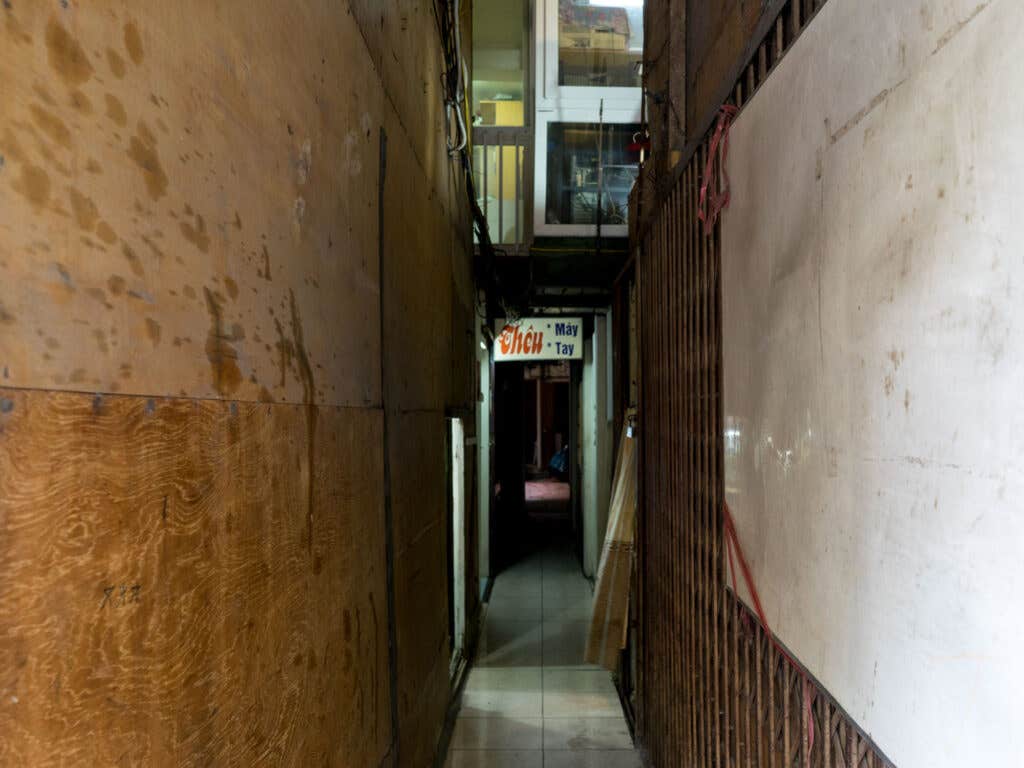
It's dusty as motorcycles weave in and out of bicycle fruit vendors, narrowly missing each other as well as clusters of tribal-pattern–clad backpackers and elders smoking thuoc lao, or Vietnamese tobacco, out of huge bamboo water pipes. By now, we've already wolfed down a bowl of bun cha, Hanoi's lunch-only noodles with pork cakes, and put away a mound of banh gio, a Vietnamese street snack reminiscent of China's zongzi, made with glutinous rice and pork steamed in banana leaves. I'm not sure I can eat another bite of anything, let alone pho, a dish I know to be reliably hearty and filling and comforting.
As we pulled up to the intersection of Hang Trong (trong translates to drums, and hang, the market street where they were sold) and Hang Gai (silk street), where Hai expected to find the street stall she'd been raving about, we were surprised to find the corner empty. Disappointed, we begin to walk away, but Hai asks a nearby shop owner if he'd know where to find the pho and the woman who makes it. He nods to a nondescript alley behind the local seamstress. Lo and behold, at the end of the alley hangs a sign that reads: "Looking for pho? This way—>" pointing to a set of stairs.
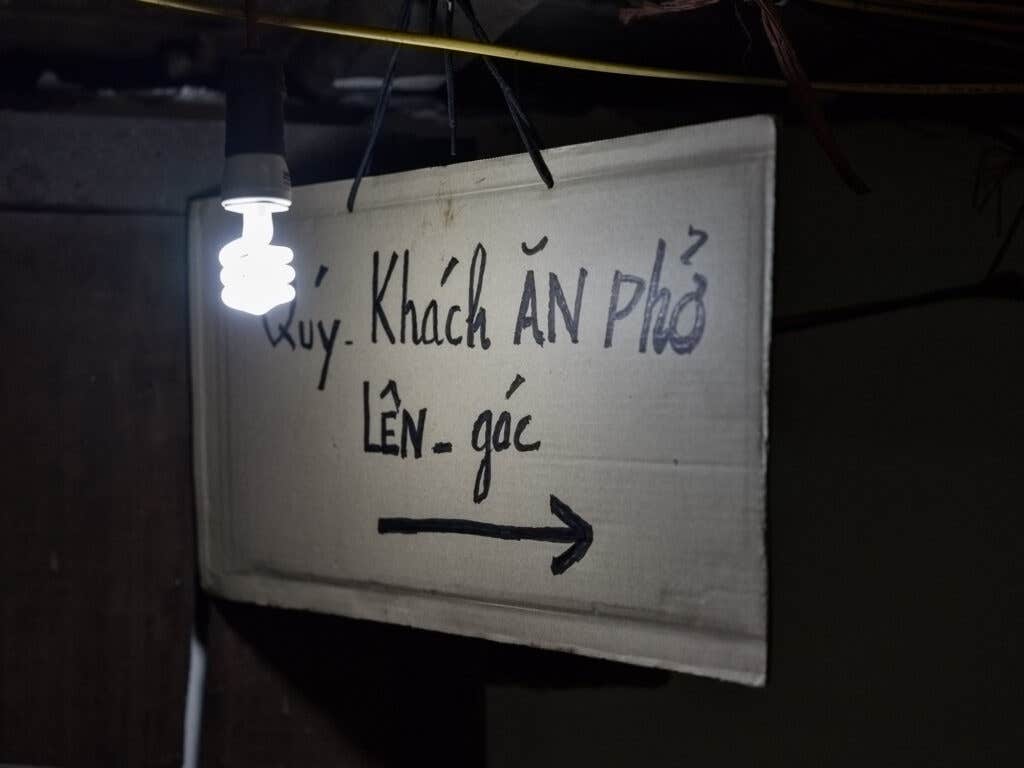
Standing at the top, my stomach starts rumbling as soon as I catch a whiff of that fragrant beef broth laced with star anise, cinnamon, and Vietnamese cardamom, wafting down a hallway. "It’s not time yet," says a woman sitting over a pot of beef bones in a small courtyard. “Come back at 3 p.m.” We reluctantly shuffle out, our pursuit of pho delayed just a bit longer.
Food writers have long waxed poetic about Hanoian pho, that lightly-garnished, clear-as-consommé bowl of healing powers. If ever I've tasted one outside of my grandma's house, this was it. At 3 o'clock sharp, we'd taken our spots, as we would on a street corner, sitting on red and blue plastic stools at plastic tables perched precariously close to the ground—except we were in Ms. Minh's living room. The mastermind behind the pho, Ms. Minh herself, explained that after hawking pho on the street for nearly 15 years, she'd been forced by the police to relocate indoors just a few months earlier, as part of a recent country-wide (perhaps region-wide?) move to remove street vendors, the lifeblood of Southeast Asia's cities, from sidewalks.
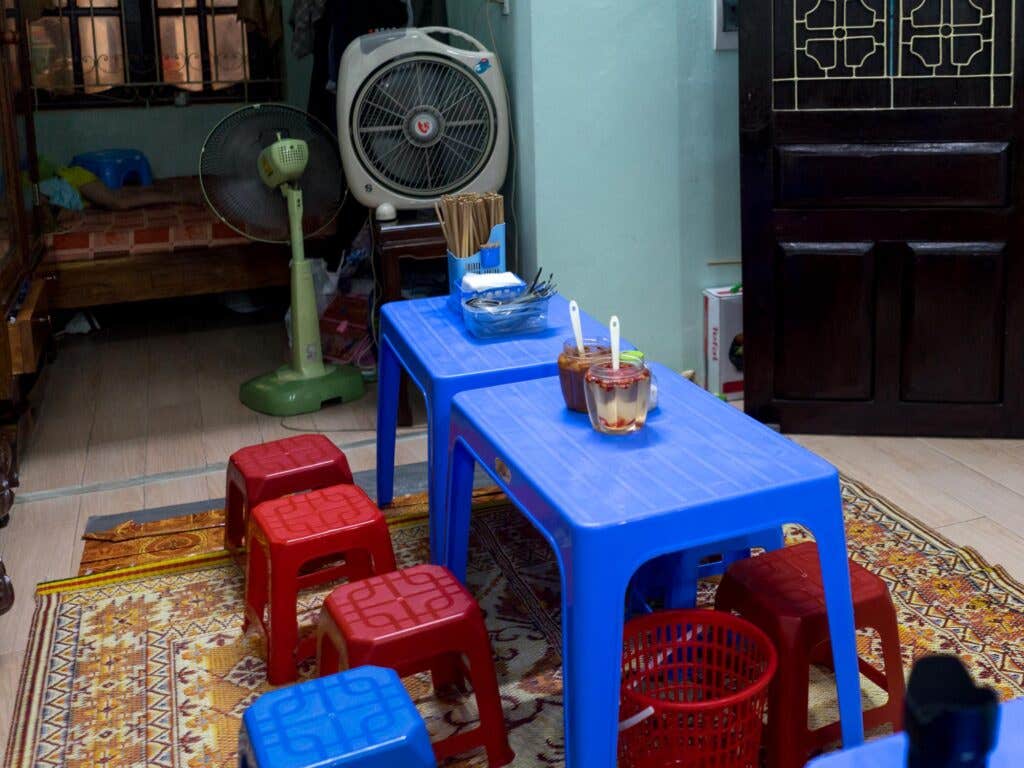
Ms. Minh’s late ancestors, peeking out from picture frames behind burnt sticks of incense and platters of fruit offerings, watch over us while we eat, and a small child is sleeping on a day-bed across the room. We hardly mind as we noisily stuff our faces. The broth is perfectly clear, so much so that I can see every noodle down to the bottom of the bowl, with the flatter, fresh banh pho noodles that tangle around the thinly sliced sheets of lean beef. A sprinkling of freshly chopped scallions and a duo of Thai chilis crown the top.
As my broth-to-noodle ratio reaches a precariously low level, Ms. Minh swings by, unsolicited, to pour some more of the steaming liquid into my bowl. (In my experience, it’s hardly worth protesting when a Vietnamese woman offers you more food). We ask her how business is going after the meal, and she explains that despite the loss in foot traffic, her repeat customers have remained faithful. “People come from all over to eat my pho,” she proclaims, with a bit of old Hanoian pride. “From China, Korea, they all know the pho of Hang Trong street and they always come back.”
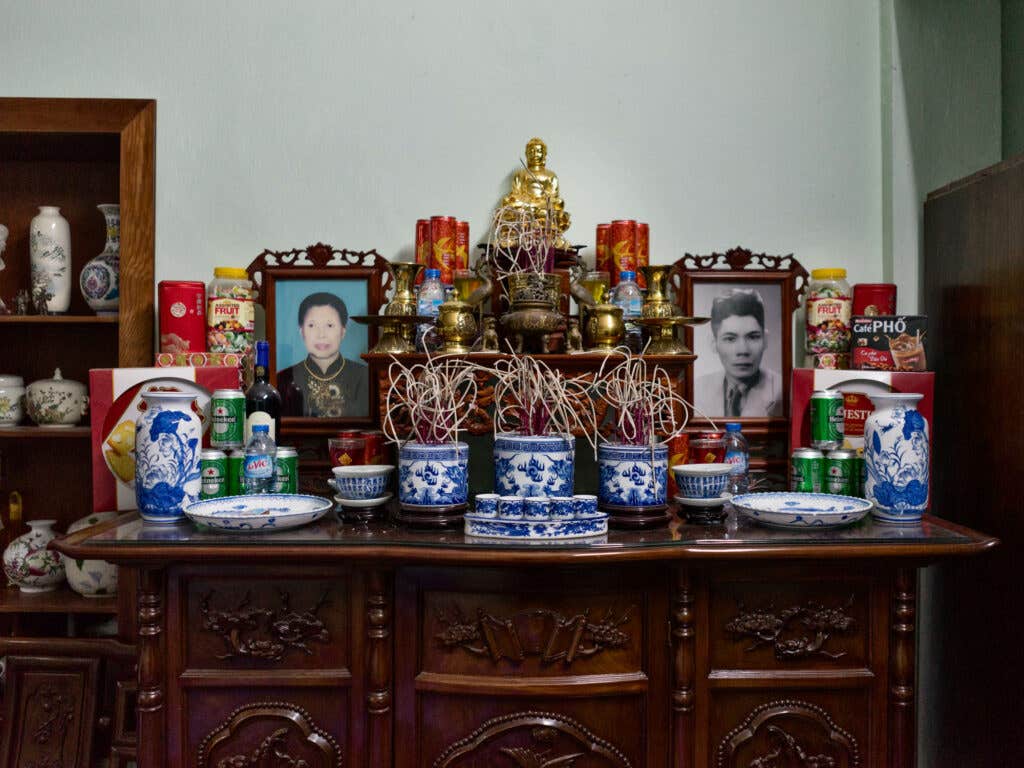
We also ask, sheepishly, how her pho is made, to which the paranoid Ms. Minh waves our camera away for fear of exposing her "secret family recipe." But as we cleaned our bowls, she nodded approvingly, warmed slightly by our enthusiasm, surrendering a few sparse details about her philosophy as we were on our way out: The beef bones are set to simmer a whopping 24 hours before she opens the following day, with all traces of fat skimmed off the top periodically to preserve the meaty flavor while yielding that signature translucence.
That pho, only served from 3 p.m. to 7:30 p.m., is meant to be a Hanoian afternoon snack, according to Ms. Minh: “This pho is a light meal that provides good energy for the day so you don’t have to wait long hours for your dinner.” Sure enough, as we stumbled out from the alleyway into the daylight, having just finished our third lunch, mind you, we hardly felt bloated, as if our stomachs had turned into endless black holes. But I wager you’d be hard pressed to find anyone who’s had a bite of this pho and not feel that the experience, even in the sweltering heat, was just a little bit magical.
Pho Hang Trong
8 Hàng Trống
Hoàn Kiếm
Hà Nội
Keep Reading
Continue to Next Story









